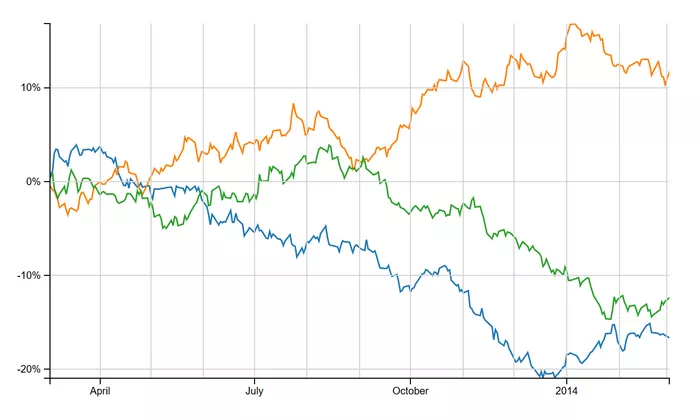Shorting penny stocks can be a lucrative yet risky strategy for investors who want to capitalize on the decline in the price of these low-value securities. Unlike traditional stock trading, where investors buy and hold, shorting involves borrowing shares and selling them with the intention of buying them back at a lower price. In this guide, we will explore the basics of shorting penny stocks, the risks involved, and the strategies that can be employed to maximize potential profits while managing risk.
What Are Penny Stocks?
Penny stocks are typically shares of small companies that trade at a low price, usually below $5 per share. These stocks often belong to companies with limited financial resources, low market capitalization, and limited trading volume. Because of their low price and volatility, penny stocks can experience significant price swings, which presents both opportunities and risks for traders.
Characteristics of Penny Stocks
Low Share Price: Generally priced under $5 per share.
High Volatility: Significant price fluctuations due to limited liquidity.
Small Market Capitalization: Often represent small or start-up companies.
Limited Regulation: Often traded over-the-counter (OTC) or on smaller exchanges like the Pink Sheets.
Shorting Penny Stocks: An Overview
Short selling is the process of borrowing stocks from a broker and selling them on the market in the hope of buying them back later at a lower price. If the price of the stock drops, the short seller can buy back the shares at a lower price and pocket the difference.
The Process of Shorting Stocks
Borrow Shares: A short seller borrows shares of a stock from a broker.
Sell the Borrowed Shares: The borrowed shares are sold at the current market price.
Wait for the Stock to Decline: The short seller hopes the price will drop, allowing them to buy the stock back at a lower price.
Buy Back the Shares: If the stock price falls, the short seller buys the shares back at a lower price.
Return the Borrowed Shares: The shares are returned to the broker, and the short seller profits from the difference.
While this strategy is commonly used for stocks with higher liquidity, penny stocks also present shorting opportunities due to their high volatility.
Why Short Penny Stocks?
Shorting penny stocks is attractive for several reasons:
1. Potential for Large Profits
Penny stocks often experience sharp price declines, which means significant profit potential for short sellers if they can time the market correctly.
2. Market Inefficiencies
Penny stocks are often less researched and less efficient than larger, more established stocks. This can result in mispricings and the potential for significant price movements, providing opportunities for shorting.
3. High Volatility
The volatility of penny stocks creates both opportunities and risks. A sudden price drop due to news, poor earnings, or market sentiment can lead to significant profit opportunities for short sellers.
How to Short Penny Stocks: A Step-by-Step Guide
Step 1: Choose a Brokerage Account
To short penny stocks, you need to have a margin account with a brokerage that allows short selling. Not all brokers permit short selling, especially for low-priced stocks. Be sure to select a broker that provides access to penny stocks and allows shorting.
Top Brokers for Shorting Penny Stocks: Some brokers, like TD Ameritrade and Interactive Brokers, are popular among short sellers due to their advanced tools and low margin rates.
Step 2: Locate the Shares to Borrow
Once you’ve selected a broker, the next step is to locate the shares you want to short. Penny stocks, due to their low liquidity, can be difficult to borrow. Brokers may not always have shares available for shorting, so it’s essential to check whether the shares are available.
Brokers with Penny Stock Availability: Some brokers, such as Interactive Brokers, offer a wider selection of stocks available for shorting. Others may have restrictions on shorting low-volume stocks.
Step 3: Analyze the Stock
Before initiating a short trade, it’s essential to conduct proper research. Penny stocks can be highly speculative, so thorough analysis can help identify whether a stock is likely to decrease in price. Key factors to analyze include:
Company Fundamentals: Assess whether the company’s financial situation justifies its current stock price.
Technical Analysis: Look for chart patterns, trends, and indicators that suggest a downward trend.
News and Sentiment: Monitor news for negative events like poor earnings, scandals, or legal issues that could drive the stock price lower.
Step 4: Enter the Short Position
Once you’ve decided to short the penny stock, you can enter the trade. To do this, simply place a short order through your brokerage. You will borrow the shares from your broker and sell them at the current market price.
Step 5: Monitor the Trade
After entering the short position, you need to closely monitor the stock. Penny stocks are volatile and can experience sudden price changes. Keep an eye on:
Stock Price Movements: Be ready to close your position if the stock begins to move against you.
Market News: Keep track of news that might impact the stock price.
Risk Management: Set stop-loss orders to limit your potential losses in case the price rises instead of falling.
Step 6: Cover the Short Position
To close your short position, you need to “cover” the trade by buying back the shares. If the price has decreased, you can buy back the shares at a lower price and pocket the difference. If the stock price has risen, you’ll have to buy back the shares at a higher price, resulting in a loss.
Risks of Shorting Penny Stocks
While shorting penny stocks can be profitable, it is important to recognize the risks involved. These risks are heightened by the characteristics of penny stocks, such as their high volatility and low liquidity.
1. Unlimited Loss Potential
Unlike traditional long positions, where the maximum loss is limited to the amount invested, short selling carries unlimited risk. If the price of the stock increases significantly, the losses can exceed the original investment.
2. Hard to Borrow Stocks
Because penny stocks often have lower liquidity, it can be difficult to borrow shares to short. This could result in the broker recalling the shares you borrowed, forcing you to close your position at an unfavorable price.
3. Short Squeeze Risk
A short squeeze occurs when a heavily shorted stock experiences a rapid price increase, forcing short sellers to buy back their shares to cover their positions. This creates a feedback loop, further driving up the price. Penny stocks are especially susceptible to short squeezes due to their low float and volatility.
4. Regulatory Risks
Penny stocks are often traded on less regulated exchanges, which can lead to concerns about market manipulation. Shorting these stocks may expose you to risks of price manipulation or fraud.
Risk Management Strategies for Shorting Penny Stocks
Due to the high risk involved, it’s essential to implement proper risk management strategies when shorting penny stocks. Here are a few tips:
1. Use Stop-Loss Orders
A stop-loss order helps limit potential losses by automatically buying back the shares if the price reaches a certain level. For example, if you short a stock at $2, you might set a stop-loss at $2.50 to limit your losses if the stock price increases.
2. Limit the Size of Your Position
Avoid putting a significant portion of your portfolio at risk by limiting the amount you short on penny stocks. Stick to a small percentage of your overall capital to protect your portfolio from large losses.
3. Diversify Your Shorts
Instead of shorting a single penny stock, consider diversifying by shorting multiple stocks. This helps spread risk and reduces the impact of any single position going against you.
4. Stay Informed
Given the volatility of penny stocks, staying updated on news and market developments is crucial. Be proactive about monitoring the markets and ready to act quickly if new information emerges.
Conclusion
Shorting penny stocks can be a highly rewarding strategy for experienced traders, but it comes with significant risks. Understanding the process of shorting, as well as the inherent dangers, is essential for making informed decisions. By using proper risk management techniques, conducting thorough research, and being cautious with your positions, you can increase your chances of profiting from shorting penny stocks while minimizing potential losses. However, always remember that the risks involved mean this strategy is not suitable for everyone, and careful consideration is needed before entering the market.
In summary, shorting penny stocks offers the possibility of substantial profits, but it requires expertise, patience, and a solid risk management strategy to navigate the volatility and uncertainties of these low-priced securities.
Related topics:





























